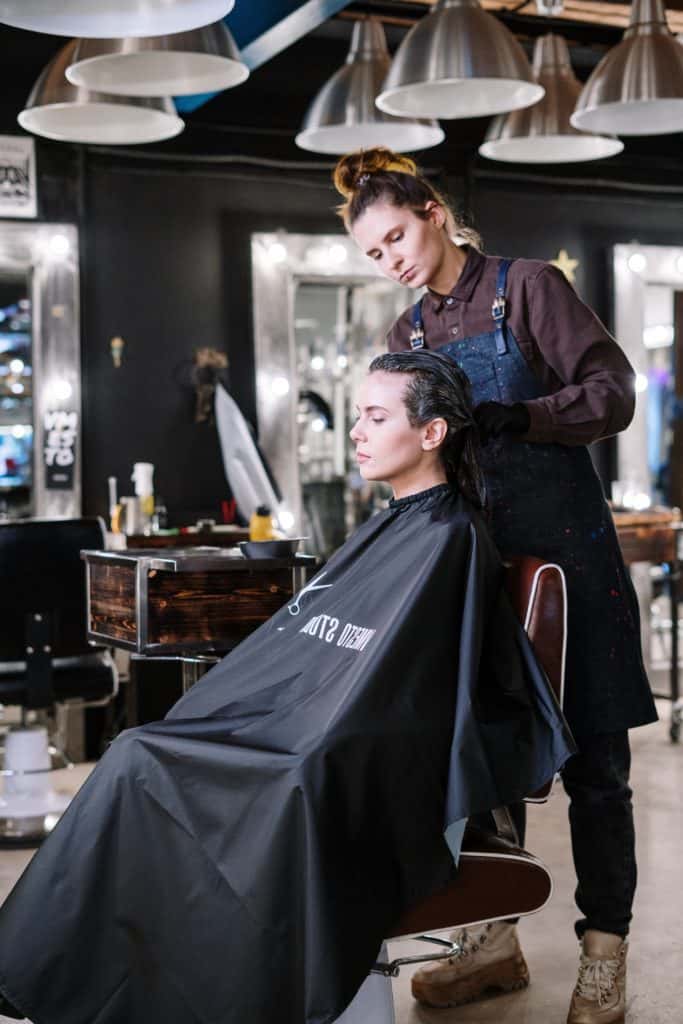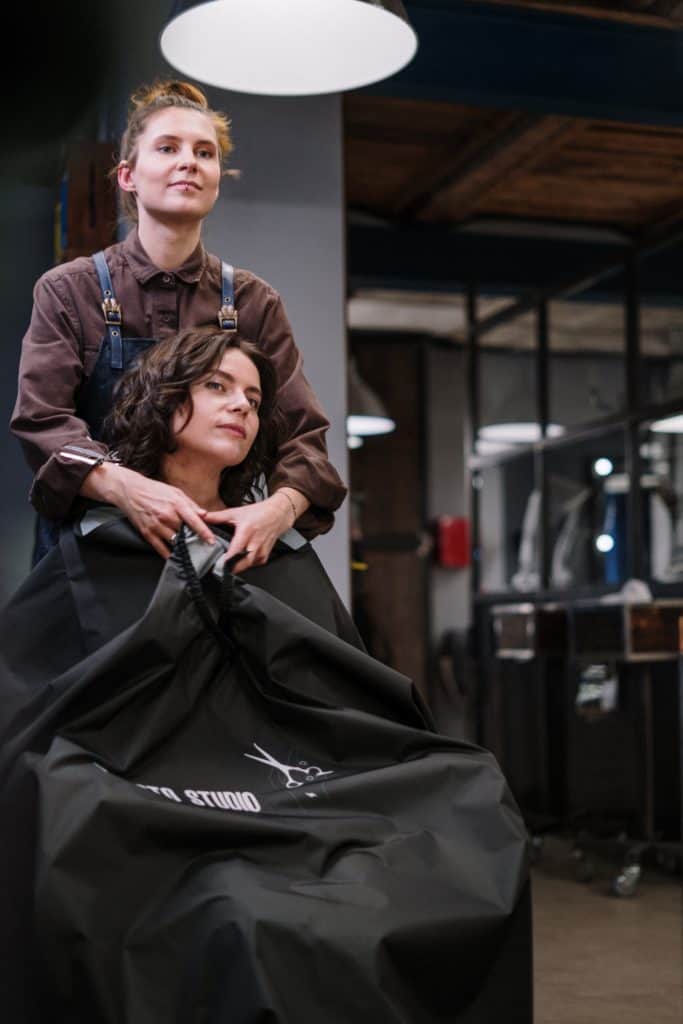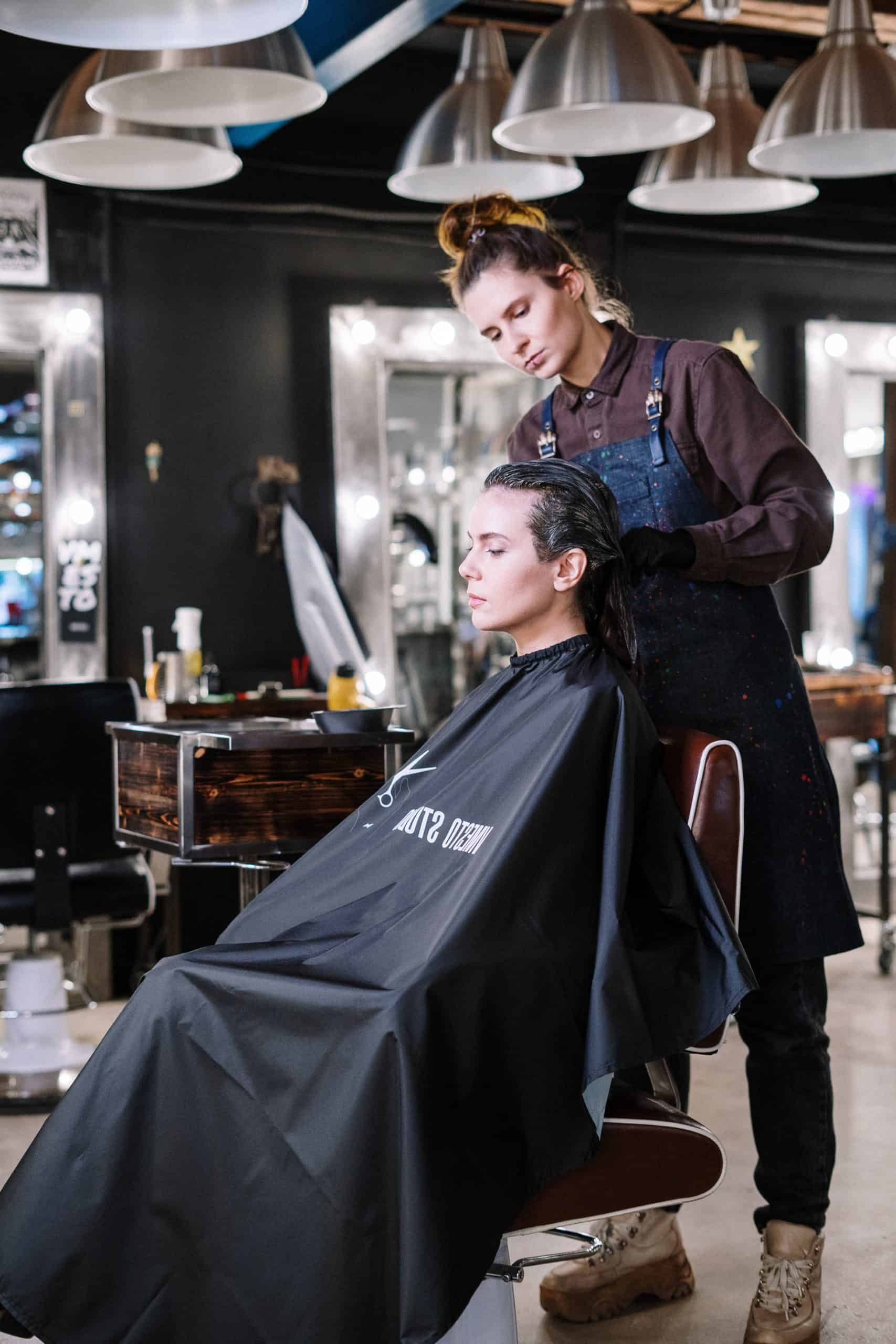What Makes a Great Salon Experience Better?
Do you know what makes a great salon experience better? Educating your customers!

What Makes a Great Salon Experience Better?
A great salon experience means that your clients have entrusted you with their haircare and trust you with their appearance and to some extent, their confidence.
👍 By employing techniques from How to Shampoo Hair in the Salon and Make More Money a stylist or barber is helping their clients relax and let go of tension from their body. Specifically stress tension in their head and neck.
It’s hard for clients to leave a salon feeling completely relaxed and say that it wasn’t a great salon experience.
👍 Being consistent and trustworthy in performing services that your guests are confident in and are continuing to invest in building a relationship with you should tell you that you know How to Communicate with Clients in the Salon.
👍 Your clients trust you. They consistently return for your expertise and because of that, we MUST educate our clients. Tell them what they don’t know so that they can care for themselves and their hair better.
THIS is what makes a great salon experience better.
What makes a great salon experience better- TRUST
When clients trust you they are counting on you communicating what you see that they need that they don’t know that they need.
I’m not talking about pushing retail that they don’t need, but rather, educating your clients on things that they just were unaware of.
Hair Consultation Questions- How to conduct a perfect consultation
What kinds of things should your clients be educated about?
You don’t know what you don’t know, until you know that you didn’t know it.
What do your clients not know that they don’t know?
What do you mean by educating customers is ‘What Makes a Great Salon Experience Better’?
Hear me out.
Your guests are not responsible for knowing or not knowing something YOU ARE AN EXPERT IN!
Most guests don’t routinely check their scalp and the back of their head.
Sometimes they don’t notice when their hair desperately needs a new product for extra hydration, or if they have too much protein. Or that the issue they’ve been having is actually chlorine buildup from spending too much time at the pool over the summer, or they have a year’s worth of product buildup that has been causing their bad hair days.
It’s up to you, as their professional hairstylist or barber to tell them what they need to maintain healthy hair and the look that they want.
A great salon experience is what they already know they’re going to get when they come to see you. A BETTER salon experience is when they know that if you see something they should know about that you are going to educate them about it.
Educating customers in terminology
Here are only a few simple and common examples of uneducated guests.
Have you ever, as a salon or barbershop professional, had someone sit in your chair and say “I want a fade.” Or “I want a bob.” And leave very upset?
We like to think it was just a lack of communication but in reality, it’s that our clients don’t know the terminology and words to use to describe what they want.
Or had a guest complain about their terrible dandruff and the Head and Shoulders that they are using to treat it but the product is only making the condition worse?
That’s because many people don’t know what true dandruff is and are treating the wrong symptom.
That’s your job.
Teaching your clients how to The Difference Between Dandruff and Dry Scalp
Or the all beloved classic… ‘I only get my hair cut once every two years because I want it long and I curl it every day. So only cut 1/4″ off.” Oh, how we hate this one. You know what I’m talking about!
This type of client is uneducated about how What are Split Ends and How to Get Rid of Them and How Does Heat Protectant Work? Do I need it?
What Makes a Great Salon Experience Better is by Educating Guests Because it Builds Trust
Sharing your knowledge about products, styles, and other important hair topics makes you trustworthy to your guests. You become a safe resource for their questions and concerns when it comes to their hair.
Do not try to educate your guests the language of the trade. The end goal is not for them to speak the same language that we use behind the chair.
But simply be able to use the correct terminology and use photos to confirm that you are both on the same page for whatever color or cut is the desired end result.
By explaining to your customer that even though there’s a ‘lingo’ that is commonly used, no two fades are the same. No two ‘blonde’s are the same either. Using photos is the best way to communicate exactly what you have in mind to the professional.
Gently correct your guest if they are bluntly (and a little too confidently) asking for something you 100% know they do not want. Explain that ‘This kind of fade that you are describing looks like this…’
OR
‘Next time, if you ask for that kind of bob you’ll probably leave the shop looking like this… so, just ask for X kind of haircut and show them a photo just to be sure you are both on the same page.’
Most guests are grateful for the correction and education. But every once in a while you do get that one client that is right all the time and there is no telling them otherwise. For those, just walk it off and know that you did your part.
For those of you struggling with those impossible clients who are disrespectful and never hear a word you say, it may be time to let them go… But that is a discussion for a different article, please see
How to Fire Difficult Hair Client
And
Rude Salon Clients- Who are They and How to Deal with Them
Educate clients in color
We’ve all had that one client who didn’t have time to book ahead of time and did the ‘quick home box dye’ that makes us all just close our eyes and inwardly groan.
The guest comes in and says that they colored their hair at home by using products ‘XYZ’ because they want a ‘golden highlight and an ashy base’ (yes, a client actually told me this once). It’s your job as a stylist to explain why what she plans on doing will actually turn her hair green because gold is yellow and ash is blue, which combined makes green undertones.
This was an excellent opportunity to execute what makes a great salon experience better by educating my client on The Color Wheel – Can You Tone Your Hair Twice?
For those of you who know which of those guests are, and are kind and willing enough to help them through what they think they need from the grocery store to hold them over, you are brave souls. You understand why clients need help formulating because of the crazy and unknown world of undertones.
Or sometimes clients like to book for ‘just a retouch’, but to you that means a highlight, low-light, root retouch, and toner. A service that they may believe can be squeezed into an hour but will really take 5.
Educating clients on what kind of services they receive and helping them understand the process and why it takes as long as it does (and why you can charge the prices that you do) prevents there from being unrealistic expectations, expensive surprises, or unpleasant complaints or reviews later on.
WE HAVE NOTHING TO HIDE from our guests. Remember that this is your business and open communication is what keeps your doors open. If you choose not to share formulas there is nothing wrong with that, though how the process works and what the products we use on our client’s hair is not secret to them.
Educate clients on products
Styling products and shampoo and conditioner products, retail, are a big part of what we do, right? We do our customer’s hair and send them home with the products they need so that they can keep looking as fabulous as they do when they walk out our door.
When a client leaves after getting a copper color on their hair but calls a week later saying that it didn’t stay, but they are using purple shampoo.
Que stylist forehead slap.
This would be a perfect opportunity to share some knowledge and educate this client about how the color wheel works and why the products she is using is affecting the color.
Many customers that buy retail products from us in the salon or barbershop only buy the same product because that is what they have always used. Mostly men. But oftentimes they are willing to hear and try new products while they are still sitting in your chair.
Women tend to use the same products until they are discontinued or change their style and need new recommendations from their stylist. In this case, it is a perfect opportunity to educate your guests about new products, ingredients, and what specific products are made for. For example, products designed for curly hair, or leave in conditioners.
Selling retail can be a tricky business, but the key to it is truly, educating your guests and not pushing products that they really don’t need. For tips and tricks in selling product retail please see How to Sell Retail in the Salon.

Educating customers about their hair and skin
Human skin and hair has a pH of 4.5-5.5, focusing on products that keep the hair and the skin at the proper pH helps keep the skin hydrated and healthy.
Growth patterns are another important subject to educate customers on. Most ‘bad hair days’ have to do with cowlicks and growth patterns working against the cut and messing up the guest’s original idea of their latest style.
Talk to your guests about how to get the stubborn cowlick to lay down by using the sunshine technique. Combing the cowlick on the crown of the head like rays of sunshine, straight out but in a circle until the hairs find their happy place and stay laying down.
Dandruff, true dandruff, is important and a hot topic to educate guests on. Many believe that dry scalp, and flakiness are dandruff. That is false. Please educate your clients about true dandruff and how to treat it so that they don’t do more damage to their scalp and skin by using a medicated product for a condition they do not have. The Difference Between Dandruff and Dry Scalp
Sometimes even medical conditions that clients can’t see or investigate for themselves on the back of their head can be seen and exposed because of your expertise. Psoriasis, true dandruff, even cradle cap can be suggested to get checked by a dermatologist since legally we cannot diagnose medical conditions like the above.
But we can offer the knowledge that we have based on our experience and training that we’ve had!
In summary, you are the expert, tell them what you know
Educating clients is important when executing what makes a great salon experience better because each guest has their own career, interests, and expertise in their own field. Hair and skin is our field.
Clients come to us to help them get their hair right and boost their overall confidence in their appearance.
We have a responsibility to educate our guests on how to care for themselves and get the styling results that they want.
You are the expert. Share your expertise.

